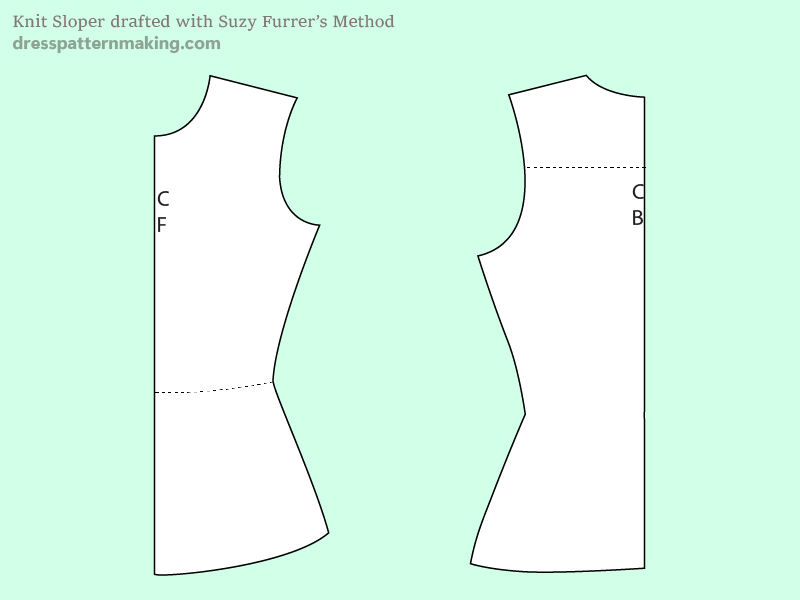Reduction in Width for Stretch Blocks

As is my custom, before I started drafting a stretch/knit block for myself, I did a lot of research. I looked at a number of textbooks (not just one), watched as many different video tutorials as I could, and then looked online to see if I could find anything else; blogs, YouTube videos, or any other textbooks. I then collated and that information to see what the difference were. I also made some blocks to different methods and compared them. I found, also as usual, that there is always some difference between different methods and different authors. Most textbooks use stretch and knit interchangeable, and that was confusing when it came to stretch-wovens. Most textbooks that I have or have seen deal mainly with patternmaking for woven, and contain one chapter on Stretch/Knits, and the information supplied didn't seem comprehensive. I did eventually come across a thick textbook of 500 pages for patternmaking purely for knits. It stated that it was using Industry Standards, whereas some tutorials I watched have said there are no Industry Standards when it comes to Stretch. I'm not going to give you definitive answers for exactly how much reduction to apply to your Block, but I will summarize what I have found, tell you what worked for me, and give you suggestions of where to start. You really need make your own toiles and determine yourself what is good for you; everyone has different tastes in terms of what is comfortable and how tight they want their stretch garments to be.
Reduction in Width
In a nutshell, these seem to be the Industry Standards for the measurements used to draft Knit Blocks:
- Stable Knits (Knits that stretch 18-25%): Reduction of 2%, or 98% of the body measurements
- Moderate Knits (knits ch 26-50%): Reduction of 3%, or 97% of the body measurements
- Stretch Knits (knits that stretch 51-75%): Reduction of 5% of the body measurements
- Stretchy Knits (knits that stretch 76-100%): Reduction of 10% of the body measurements
These are the amounts that I got from a textbook specifically for knits. The textbook gave instructions for drafting knit blocks directly from measurements (i.e. not drafting it from another block), and those measurements were body measurements with no ease added. Some patternmaking books and tutorials I've seen start with the Torso Block (which has some ease) and reduce that by 2%, 3%, 5%.... I've also watched some tutorials where the instructor stated the above standards of 2%, 3%, 5% reduction, but she was applying them to commercial patterns, which may have even more ease than the block. In effect, if you choose to use the reduction that are stated in the textbook, this means:
- Stable Knits are made to exactly your body measurements
- All the other knits are made with Negative Ease; 97%, 95% & 90% of your body measurements.
Note that the above doesn't apply to Stretchwovens; even the textbook on Knits said something vague like "the normal Torso Block should be used, but some reduction in the width is needed".
My Recommendation: From Torso Block to Stretchwoven Block
To draft your Stretchwoven Block, reduce your Block by 2%. I always prefer to test sleeveless garments first for testing fit (why add the extra work of the extra element of the sleeve?) so the Sleeveless Stretchwoven Torso is the first Stretch Block I created, and it fit well. Note the changes made to the Torso Block to crate the Sleeveless Torso Block:
- Reduction in width of about 1/4 inch
- Armhole Raised 1/2 inch
My point here is: if you make changes to your Torso Block (with Sleeve) to create a Stretchwoven Block (with Sleeve), and then you want to draft sleeveless garments, you may want to try reducing reduce your Stretchwoven Block and raise the armhole again.
My Recommendation: From Stretchwoven to Knit
First try reducing your Block Measurements and testing that. If it's far too big, remake your blocks using percentages of your body measurements, as above. Once you've done the main work in creating your first Knit Block, it's not that difficult to make the further changes; i.e. it is a case of redrawing the side seam line.

